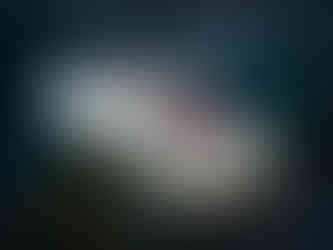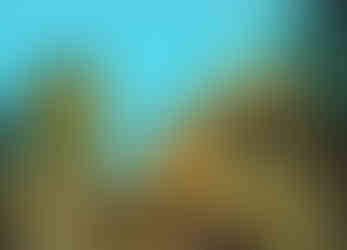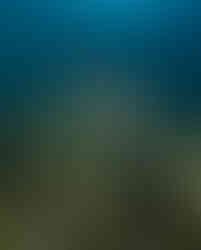THE GREAT SOUTHERN REEF
- Brooke Lori Pyke

- Dec 20, 2020
- 5 min read
Updated: Dec 21, 2020
The Great Southern Reef has so much to offer, but is very much over looked. My own backyard is full with life and I only recently realised just how amazing it is. Diving off of Australia's wild southern coast will reveal an ocean teaming with creatures. There are huge kelp forests, rays, sharks, seahorses and seadragons are just some of the animals you're likely to meet. The GSR hosts some of the most healthy temperate and unique reef systems in the world. It covers 8,000km of coastline from Kalbarri in WA all the way to northern NSW. “What makes the Great Southern Reef such a distinctive ecosystem is that not only is it incredibly biodiverse, but a high proportion of the species it hosts are found nowhere else on earth,” said Stefan Andrews, Ocean Imaging director and science communicator. The GSR is also still very much unprotected from human impact as oil drilling and climate change are starting to threaten the area. The more people know about it, hopefully the better it will be protected.
I have written this blog in hope to inspire more people to venture into the cooler waters of the south coast of Australia. Discover the magic and beauty for yourself.

“The Great Southern Reef is a fantastic example of how the natural world can thrive when we leave it alone. However, more must be done, because right now the Reef faces extreme threats from climate change and oil drilling. We need to embrace the identity of the GSR so all can understand and appreciate this ecosystem, so we can forge ahead and do everything possible to protect it.” — DR. SYLVIA EARLE, FOUNDER, MISSION BLUE

The GSR as seen diving from Melbourne, Victoria.
I grew up in the eastern suburbs of Melbourne, Victoria, Australia. Being one of the coldest parts of Oz (yes we get snow in winter shocking I know!) not many people think of diving here or even realise there is anything to see. I had never even dived there until not long ago. And I was so excited to discover what beautiful critters could be found so close to home.. Diving in Victoria or indeed the south coast of Australia is not widely known about and it's certainly not a touristic thing. When you think of diving in Australia you would instantly think of The Great Barrier Reef. But if you're ready to brave the cold then you're in for a real treat (toughen up princess it's worth it I promise). Even though 70% of Australians live close to the GSR it is still relatively unknown to locals. The GSR is an interconnected network that supports thousands of species of animals. It is exposed to the wild weather of the southern ocean which is what contributes to its health and diversity of life. Some species found there are the only ones of their kind. Many endemic species such as the Leafy Seadragons can only be found in the GSR and are highly prized for many divers. Read more about the GSR here: https://greatsouthernreef.com/

Many of the dive sites near Melbourne are easily accessible by shore which is one thing that makes them so great as well as being affordable. If you have your own gear all you need to do is rent tanks, load up your car and off you go. Depending the time of the year the water temp can vary between 10C and 21C. Some people use dry suits, I used a semi dry 7mm with hood and gloves and was comfortable in 14C (the coldest I had which was in early winter). The depths of the shore dives are very shallow from about 2-7m depth depending on the tides and site. There are also great boat dives as well which are a bit more expensive but there's a lot on offer in terms of diversity. There are wrecks, wall dives and reefs. I have written about a few of my favourite sites below. But you can read all about the other different sites near Melbourne here: www.scubadoctor.com.au/dive-resources.htm

BLAIRGOWRIE PIER, Port Phillip Bay.
This site is my favourite and it has so much to offer for macro enthusiasts and photographers. To dive here you can park your car at the Blairgowrie Yacht Squadron and gear up there. It's then a short walk to the beach where you can walk in. Or you can walk the length of the pier and enter via the lower landing. The depths are between 1m and 5m, sandy bottom and suitable for beginners. Check the wind and swell reports before diving. And I recommend getting there early if going on a weekend. There is lots to see here and the pillars of the pier are teaming with critters. Such as Blue Ring Octopus, Maori Octopus, Spider Crabs, Nudibranchs, Pot Belly Seahorses, Tassled Angler Fish and various sting rays like Smooth Rays, Fiddler Rays and Port Jackson sharks. I even heard of sightings of dolphins, seals and 7 gill sharks for those who have been lucky.
In early winter there is also the famous Spider Crab migration which can be seen at Blairgowrie. Thousands of Spider crabs aggregate there to moult their shells. This spectacle was filmed and shown in one episode of the Blue Planet series by the BBC and is sure worth checking out.
When diving be aware that diving is only allowed under the main pier and not out under the boats in the marina.
FLINDERS PIER, Western Port Bay.
This dive site is absolutely beautiful and on a good day the visibility can be incredible. If you want to meet the Weedy Seadragon then this is the place to go. It's pretty much 100% chance that you'll see one, I've even see them snorkelling here. You can dive it the same as you can Blairgowrie Pier, it's easy to access with parking right on the beach. Always check the swell and wind as it is quite exposed and swell makes it very surgy. Under the pier you will notice a layer of Kelp and Seagrass. This is where the Weedy Seadragons like to hide, so keep your eyes open. There are many other things around like Cuttlefish, Port Jackson Sharks, Fiddler Rays, Leather Jackets and Cow Fish. In late spring the Seadragons start to mate and you may see the males going around with their eggs attached to their tail which is pretty amazing to see.
CHANNEL MARKER SEAL COLONY, Port Phillip Bay.
If you have access to a boat, there is a channel marker out in the bay where a colony of Fur Seals like to hang out. It's best done by snorkelling as it's shallow with a sandy bottom and the current can be strong. The seals are super interactive and will actually get in the water with you as soon as you arrive. They are amazing animals and really playful and interactive. You will notice they sleep on the channel marker platform and dive in from the side of it. So don't get too close as they will literally almost land on you when they enter the water. In the area there you can also sea dolphins and Smooth Rays hangout too. Swimming with the seals can be a very amazing experience, they really are like sea puppies.
I've only managed to dive a few of the sites in Melbourne, but there is still many I want to check out. Wilsons Promontory in south eastern Victoria apparently has some of the most beautiful sites and that's definitely on my list of things to do next when diving in Victoria. The Great Southern Reef has so much to offer and it's really worth exploring. Not many people realise there is so much great diving to be had on the south coast of Australia and it's definitely not to be missed!
Dive Operators & Contacts:
Blue Line Divers www.bluelinedivers.com.au - PADI Courses and training.
Scuba Doctor www.scubadoctor.com.au - Gear rental, tanks fills and dive trips.










































Comments